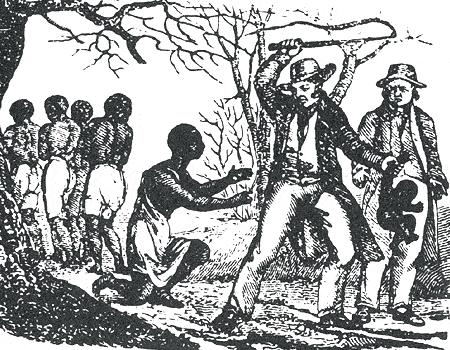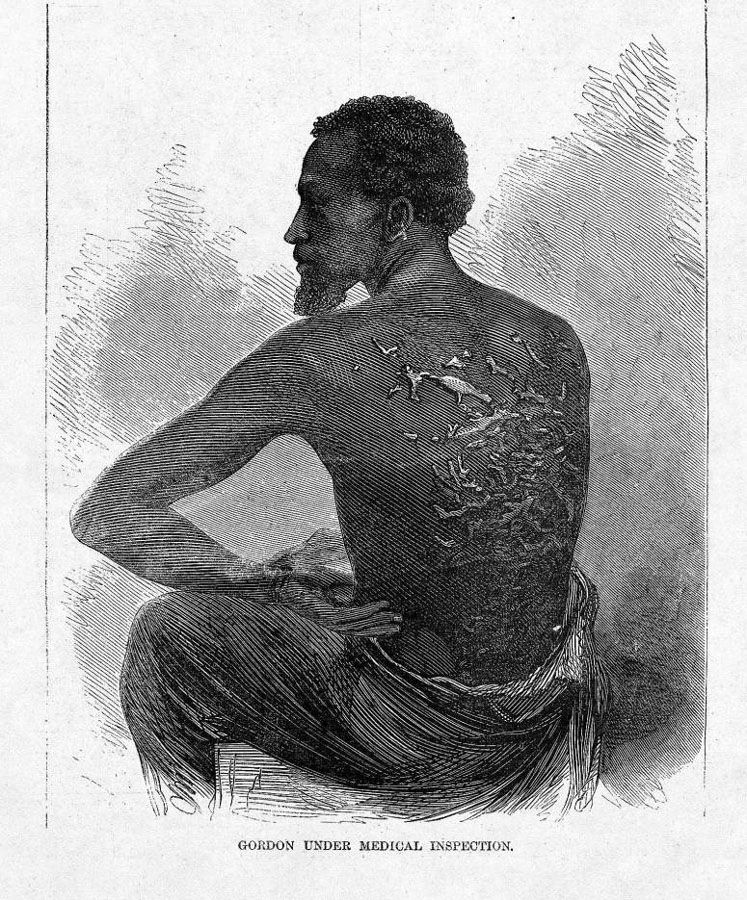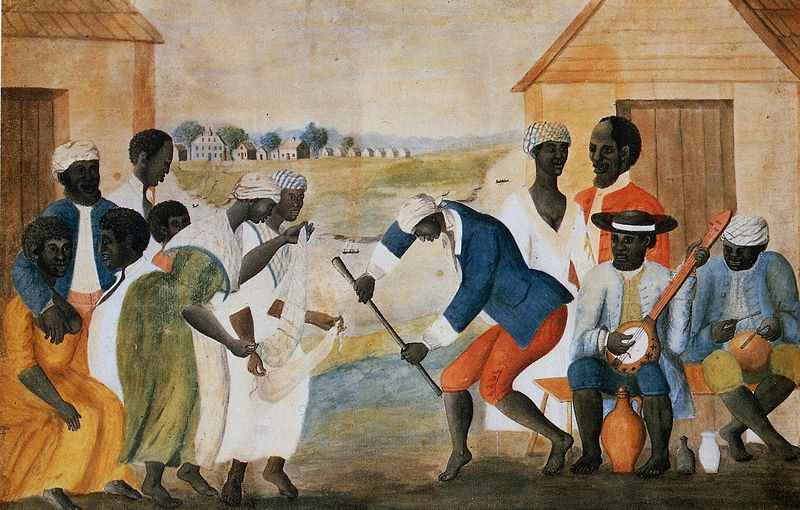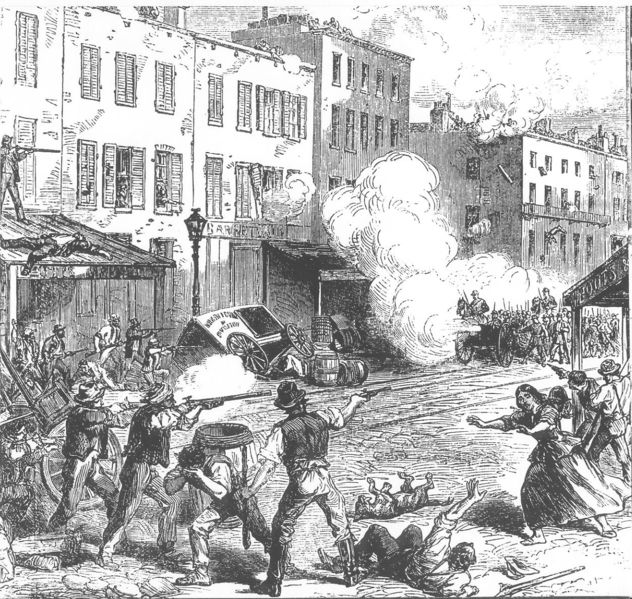First Slaves
- White Lion. In 1619, a Dutch ship, the White Lion, captured 20 enslaved Africans in a battle with a Spanish ship. They landed at Jamestown, Virginia for repairs from the battle. For food and supplies, the Dutch traded the enslaved Africans to the Colonials as indentured servants.
- The Great Migration. The Great Migration (1618-1623) was a period where the population grew from 450 to 4,000. However, there was also an extremely mortality rate due to disease, malnutrition, and war with Indians. Due to the high mortality rate, the colonies were in dire need of laborers.

Indentured Servants
- Indentured Servants. Indentured servants are laborers who are under a contract with their master to serve the master for a period of time. In exchange for being servants, they received shelter, food, passage across seas, and accommodations.
- Indentured Servants in America. In Colonial America, indentured slaves did not only consist of Africans, but a large majority of them were Irish, Scottish, English, and Germans, who were brought over from Europe and were paying their debt for the passage over sea.
- Anthony Johnson. Anthony Johnson was one of the first African Americans to have finished his services as an indentured servant and become a landowner on the Eastern Shore and slave-owner himself.
- Bacon's Rebellion. Although indentured servants become free and obtained their own land, they were given land that no one wanted. This discrimination led to Bacon's rebellion. Bacon's rebellion was the first rebellion in Colonial America. The rebellion was a protest against Sir William Berkeley, governors of Virginia.

Indentured to Chattel
- Gradual Change of Status. There was a gradual change in the status of African Americans from indentured servants to chattel slaves.
- 1640 Virginia Courts. In 1640, the Virginia courts had sentenced one of the first black indentured servants to slavery.
- John Casor. In 1654, John Casor became the first legal slave in America. Anthony Johnson, previously an African indentured slave, claimed John Casor as his slave. The Northampton County rule against Casor, and declared him propter for life by Anthony Johnson.Since Africans were not English, they were not covered by the English Common Law.

Definition of a Slave (Slave Code)
- Virginia 1650 - Negroes are not allowed arms and ammunition
- Virginia, 1662 - A child's status, free or slave, depends on the mother's status
- Virginia, 1667 - Baptism does not alter the condition to the person as to his bondage or freedom
- Virginia, 1682 - All servants are not Christian at the time of purchase by some Christian
- Virginia 1705 - All servants imported and brought into the country, who was not Christians in their native Country shall be account and be slaves.

Emancipation in the North
- 1777 Vermont. Vermont, not state at the time, was the first territory to completely abolish slavery.
- 1780 Pennsylvania. Pennsylvania was the first state to completely abolish slavery
- 1781 New York. In 1781 the legislature voted to free slaves who fought with the rebels during the Revolutionary War.
- 1787 Northwest Ordinance. The ordinance was passed by the Congress of the Confederation. The ordinance prohibited slavery in the region; however, northeastern states like New York and New Jersey still allowed slavery. Although owning slaves or having indentured servants was illegal, people still owned slaves and indentured servants illegally.
- 1808 Congress. In 1808 Congress banned the importation of slaves from Africa.
- 1827 New York. New York completely abolished slavery.
Abolitionist Movement
- William Lloyd Garrison "Liberator". The "Liberator" was a weekly anti-slavery newspaper. Garrison published the Liberator" for thirty five years, from January 1, 1831 to January 1, 1866. Garrison stopped publishing the "Liberator" after the ratification of the Thirteenth Amendment, which abolished slavery throughout the United States.
- Harriet Beecher Stowe Uncle Tom's Cabin. The anti-slavery novel was published in 1852. The book was the best-selling novel of the 19th century. It helped fuel the abolitionist cause in the 1850s.
- Fredrick Douglass. Fredrick Douglass was an American abolitionist. He was a strong believer in equality among different races and genders. He was inspired people to become part of the abolitionist movement through his anti-slavery lectures.
- Harriet Tubman Underground Railroad.The Underground Railroad was a network of secret routes for slaves to escape to the free-states in the north. Approximately 6,000 people escaped slavery via the railroad. Harriet Tubman was a big player in the Underground Railroad.

Slave Uprisings
- New York Revolt 1712. The 1712 revolt was an uprising in New York City. There were twenty three African American slaves. In the revolt nine whites were shot, stabbed, or beaten to death and six were injured. Unlike the plantations in the South, New York City was a perfect place for African Americans to form a conspiracy. Slaves lived next to each other, which made it easy for them to communicate with each other. Seventy blacks were put in jail, six committed suicide, twenty seven were put on trial of which twenty one were burned to death.
- Stono Rebellion 1739. An epidemic weakened the power of slaveholders, and the slaves saw it as a chance to fight back. The revolt was led by Jemmy, an Angolan slave. Jemmy and twenty African American slaves met near the Stono River and marched down the road and seized weapons and ammunition at the Stono Rive Bridge. Along the way they burned seven plantations and killed twenty whites. They also recruited more slaves on the way and their numbers were up to eighty. However, they were eventually suppressed by a mob of plantation owners and slave-holder, under the command of Lieutenant Governor, William Bull. The captured slaves were decapitated and their heads were spiked along the road.
- New York Insurrection 1741. The insurrection was plotted by slaves and poor whites in New York. They set a series of fire in Lower Manhattan. They set fire on Fort George, the governor's house. They wanted to burn the city, kill the white men, and elect a new king and governor. Before the insurrectionists were burned or hanged, they named about fifty other co-conspirators. All the suspects were convicted in a show trial and many were hanged or burnt. Exactly how man is uncertain, but some of the remains might've been buried at the New York Burial grounds.
- Gabriel's Rebellion 1800. A revolt that planned to attack Richmond. Two slaves betrayed the conspiracy and told their masters. The state then called for a militia and the conspiracy collapsed. Gabriel again was betrayed by a fellow conspirator for the reward on Gabriel’s capture. Gabriel and his two brothers were hanged.
- Louisiana Territory Slave Rebellion 1811. Charles Deslondes led five hundred slaves down the Mississippi River Road, and along the way killed two whites and burned plantations. A militia and U.S. troops confronted the rebellion. Sixty six slaves were killed in the fight and Deslonde along with twenty two slaves were captured. They were decapitated, and their heads were stacked along the river. This rebellion is considered the largest slave rebellion in the U.S.
- George Boxley Rebellion 1815. George Boxley supposedly received a message from God to free the slaves. He planned on to meet at his home for the rebellion, but a slave told on her owner. The plans were crushed and Boxley escaped and helped runaway slaves in the Underground Railroad.
- Nat Turner's Rebellion 1831. Turner and seventy enslaved and free blacks went from house to house, freeing slaves and killed whites. They used knives, hatchets, and axes in order to keep their rebellion quiet. Turner and his rebellion were defeated by a militia. Overall Turner's rebellion killed fifty five white men, women, and children.
- Harpers Ferry 1859. John Brown led a raid on a federal armor at Harpers Ferry. He wanted to arm slaves. However, the raid failed as Brown's men either fled or were killed by the local militia. Brown himself was captured and was hanged for treason.
|
Bibliography
Davis, Ronald. "Slavery in America: Historical Overview." 16 April 2008 http://www.slaveryinamerica.org/history/hs_es_overview.htm
Goodell, William. "The American Slave Code in Theory and Practice." 16 April 2008. http://www.dinsdoc.com/goodell-1-0a.htm
Jernegan, Marcus W.. "Slavery and Conversion in the American Colonies." 16 April 2008. http://dinsdoc.com/jernegan-1.htm
Mecklin, John M.. "The Evolution of the Slave Status in American Democracy." 16 April 2008. http://dinsdoc.com/mecklin-1.htm
Russell , John H.. "Colored Freedman as Slave Owners in Virginia." 16 April 2008. http://www.dinsdoc.com/russell-1.htm
Sherman, Gordon. "Emancipation and Citizenship." Yale Law Journal 28 June 2006 16 April 2008. http://www.dinsdoc.com/sherman-1.htm
"Slavery and the Making of America." PBS. 2004. Education Broadcasting Corporation. 16 Apr 2008. http://www.pbs.org/wnet/slavery/timeline/index.html
Wahl, Jenny. "Slavery in the United States." 16 April 2008. http://eh.net/encyclopedia/article/wahl.slavery.us
|







